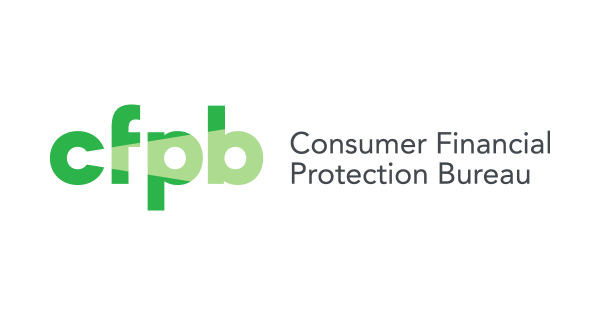
Lenders Must Determine If Consumers Have the Ability to Repay Loans That Require All or Most of the Debt to be Paid Back at Once
WASHINGTON, D.C. —(ENEWSPF)—October 5, 2017
Authored by: Consumer Financial Protection Bureau (CFPB)
The Consumer Financial Protection Bureau (CFPB) today finalized a rule that is aimed at stopping payday debt traps by requiring lenders to determine upfront whether people can afford to repay their loans. These strong, common-sense protections cover loans that require consumers to repay all or most of the debt at once, including payday loans, auto title loans, deposit advance products, and longer-term loans with balloon payments. The Bureau found that many people who take out these loans end up repeatedly paying expensive charges to roll over or refinance the same debt. The rule also curtails lenders’ repeated attempts to debit payments from a borrower’s bank account, a practice that racks up fees and can lead to account closure.
“The CFPB’s new rule puts a stop to the payday debt traps that have plagued communities across the country,” said CFPB Director Richard Cordray. “Too often, borrowers who need quick cash end up trapped in loans they can’t afford. The rule’s common sense ability-to-repay protections prevent lenders from succeeding by setting up borrowers to fail.”
Payday loans are typically for small-dollar amounts and are due in full by the borrower’s next paycheck, usually two or four weeks. They are expensive, with annual percentage rates of over 300 percent or even higher. As a condition of the loan, the borrower writes a post-dated check for the full balance, including fees, or allows the lender to electronically debit funds from their checking account. Single-payment auto title loans also have expensive charges and short terms usually of 30 days or less. But for these loans, borrowers are required to put up their car or truck title for collateral. Some lenders also offer longer-term loans of more than 45 days where the borrower makes a series of smaller payments before the remaining balance comes due. These longer-term loans – often referred to as balloon-payment loans – often require access to the borrower’s bank account or auto title.
These loans are heavily marketed to financially vulnerable consumers who often cannot afford to pay back the full balance when it is due. Faced with unaffordable payments, cash-strapped consumers must choose between defaulting, re-borrowing, or skipping other financial obligations like rent or basic living expenses such as buying food or obtaining medical care. Many borrowers end up repeatedly rolling over or refinancing their loans, each time racking up expensive new charges. More than four out of five payday loans are re-borrowed within a month, usually right when the loan is due or shortly thereafter. And nearly one-in-four initial payday loans are re-borrowed nine times or more, with the borrower paying far more in fees than they received in credit. As with payday loans, the CFPB found that the vast majority of auto title loans are re-borrowed on their due date or shortly thereafter.
The cycle of taking on new debt to pay back old debt can turn a single, unaffordable loan into a long-term debt trap. The consequences of a debt trap can be severe. Even when the loan is repeatedly re-borrowed, many borrowers wind up in default and getting chased by a debt collector or having their car or truck seized by their lender. Lenders’ repeated attempts to debit payments can add significant penalties, as overdue borrowers get hit with insufficient funds fees and may even have their bank account closed.
Rule to Stop Debt Traps
The CFPB rule aims to stop debt traps by putting in place strong ability-to-repay protections. These protections apply to loans that require consumers to repay all or most of the debt at once. Under the new rule, lenders must conduct a “full-payment test” to determine upfront that borrowers can afford to repay their loans without re-borrowing. For certain short-term loans, lenders can skip the full-payment test if they offer a “principal-payoff option” that allows borrowers to pay off the debt more gradually. The rule requires lenders to use credit reporting systems registered by the Bureau to report and obtain information on certain loans covered by the proposal. The rule allows less risky loan options, including certain loans typically offered by community banks and credit unions, to forgo the full-payment test. The new rule also includes a “debit attempt cutoff” for any short-term loan, balloon-payment loan, or longer-term loan with an annual percentage rate higher than 36 percent that includes authorization for the lender to access the borrower’s checking or prepaid account. The specific protections under the rule include:
- Full-payment test: Lenders are required to determine whether the borrower can afford the loan payments and still meet basic living expenses and major financial obligations. For payday and auto title loans that are due in one lump sum, full payment means being able to afford to pay the total loan amount, plus fees and finance charges within two weeks or a month. For longer-term loans with a balloon payment, full payment means being able to afford the payments in the month with the highest total payments on the loan. The rule also caps the number of loans that can be made in quick succession at three.
- Principal-payoff option for certain short-term loans: Consumers may take out a short-term loan of up to $500 without the full-payment test if it is structured to allow the borrower to get out of debt more gradually. Under this option, consumers may take out one loan that meets the restrictions and pay it off in full. For those needing more time to repay, lenders may offer up to two extensions, but only if the borrower pays off at least one-third of the original principal each time. To prevent debt traps, these loans cannot be offered to borrowers with recent or outstanding short-term or balloon-payment loans. Further, lenders cannot make more than three such loans in quick succession, and they cannot make loans under this option if the consumer has already had more than six short-term loans or been in debt on short-term loans for more than 90 days over a rolling 12-month period. The principal-payoff option is not available for loans for which the lender takes an auto title as collateral.
- Less risky loan options: Loans that pose less risk to consumers do not require the full-payment test or the principal-payoff option. This includes loans made by a lender who makes 2,500 or fewer covered short-term or balloon-payment loans per year and derives no more than 10 percent of its revenue from such loans. These are usually small personal loans made by community banks or credit unions to existing customers or members. In addition, the rule does not cover loans that generally meet the parameters of “payday alternative loans” authorized by the National Credit Union Administration. These are low-cost loans which cannot have a balloon payment with strict limitations on the number of loans that can be made over six months. The rule also excludes from coverage certain no-cost advances and advances of earned wages made under wage-advance programs offered by employers or their business partners.
- Debit attempt cutoff: The rule also includes a debit attempt cutoff that applies to short-term loans, balloon-payment loans, and longer-term loans with an annual percentage rate over 36 percent that includes authorization for the lender to access the borrower’s checking or prepaid account. After two straight unsuccessful attempts, the lender cannot debit the account again unless the lender gets a new authorization from the borrower. The lender must give consumers written notice before making a debit attempt at an irregular interval or amount. These protections will give consumers a chance to dispute any unauthorized or erroneous debit attempts, and to arrange to cover unanticipated payments that are due. This should mean fewer consumers being debited for payments they did not authorize or anticipate, or charged multiplying fees for returned payments and insufficient funds.
The CFPB developed the payday rule over five years of research, outreach, and a review of more than one million comments on the proposed rule from payday borrowers, consumer advocates, faith leaders, payday and auto title lenders, tribal leaders, state regulators and attorneys general, and others. The final rule does not apply ability-to-repay protections to all of the longer-term loans that would have been covered under the proposal. The CFPB is conducting further study to consider how the market for longer-term loans is evolving and the best ways to address concerns about existing and potential practices. The CFPB also made other changes in the rule in response to the comments received. These changes include adding the new provisions for the less risky options. The Bureau also streamlined components of the full-payment test and refined the approach to the principal-payoff option.
The rule takes effect 21 months after it is published in the Federal Register, although the provisions that allow for registration of information systems take effect earlier. All lenders who regularly extend credit are subject to the CFPB’s requirements for any loan they make that is covered by the rule. This includes banks, credit unions, nonbanks, and their service providers. Lenders are required to comply regardless of whether they operate online or out of storefronts and regardless of the types of state licenses they may hold. These protections are in addition to existing requirements under state or tribal law.
A factsheet summarizing the CFPB rule on payday loans is available at: http://files.consumerfinance.gov/f/documents/201710_cfpb_fact-sheet_payday-loans.pdf
Text of the CFPB rule on payday loans is available at: http://files.consumerfinance.gov/f/documents/201710_cfpb_final-rule_payday-loans-rule.pdf
Prepared Remarks of CFPB Director Richard Cordray on the Payday Rule Press Call
###
The Consumer Financial Protection Bureau is a 21st century agency that helps consumer finance markets work by making rules more effective, by consistently and fairly enforcing those rules, and by empowering consumers to take more control over their economic lives. For more information, visit consumerfinance.gov.
Source: www.consumerfinance.gov








